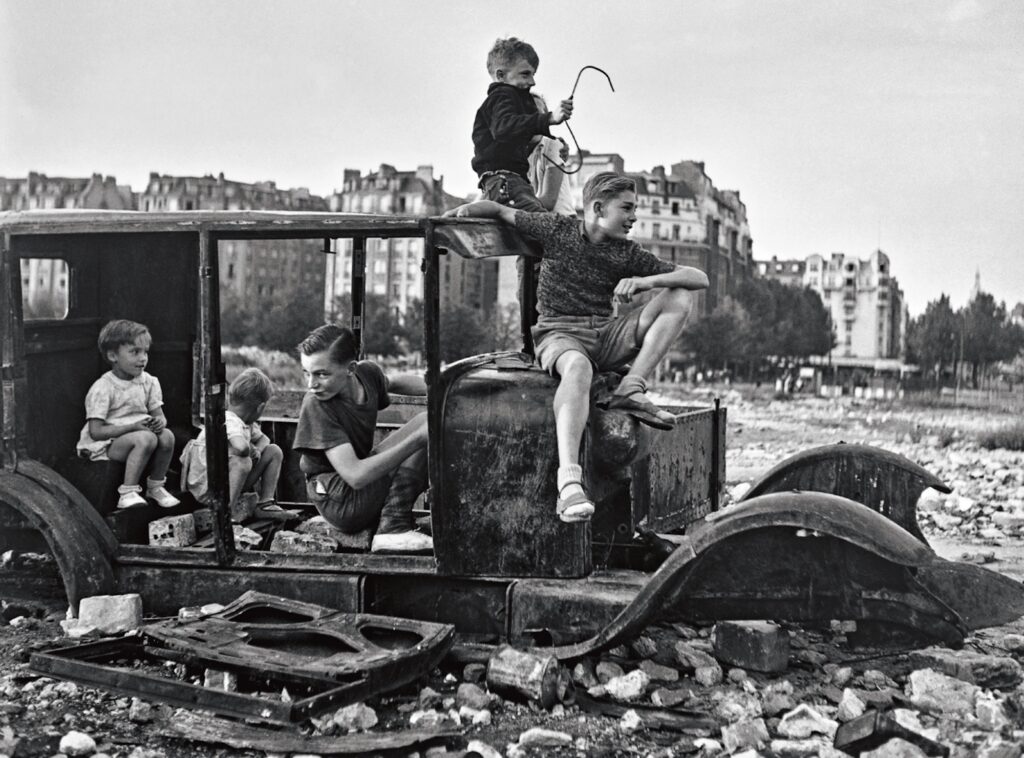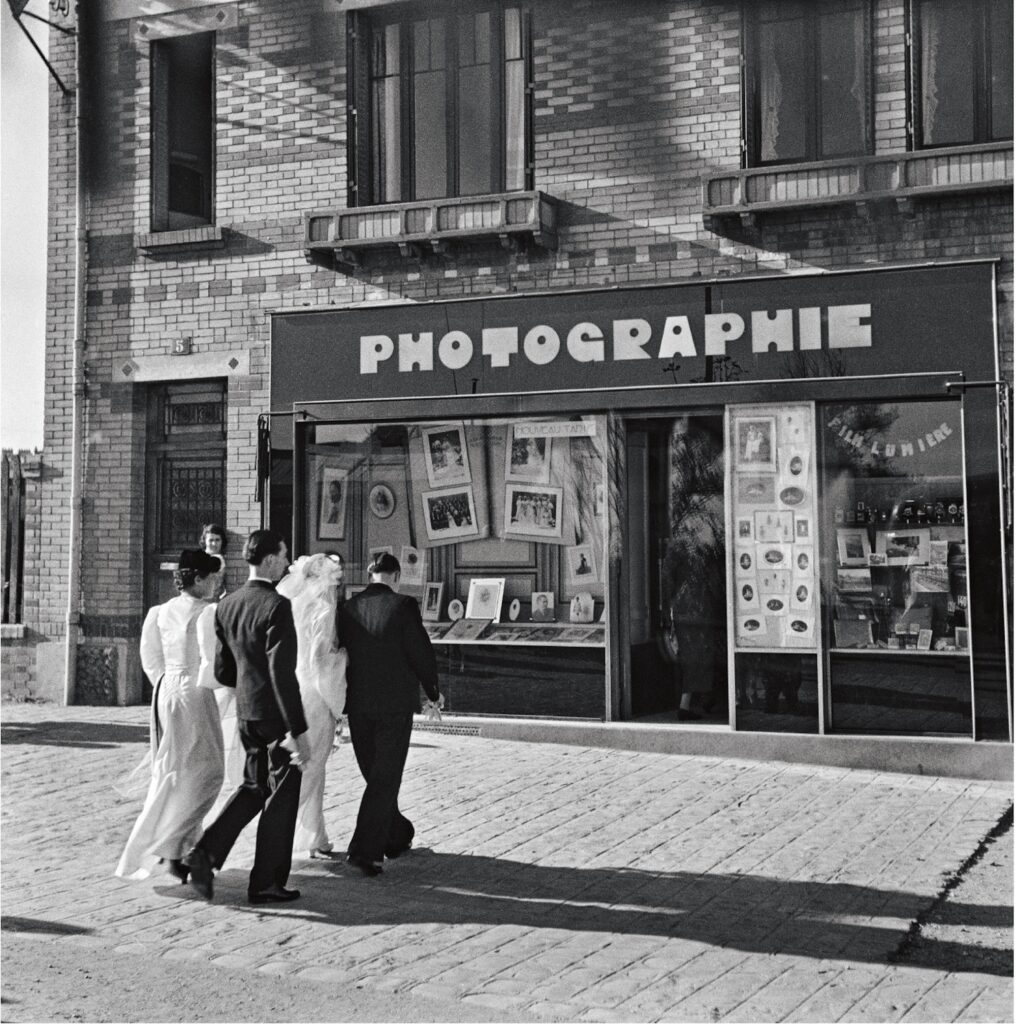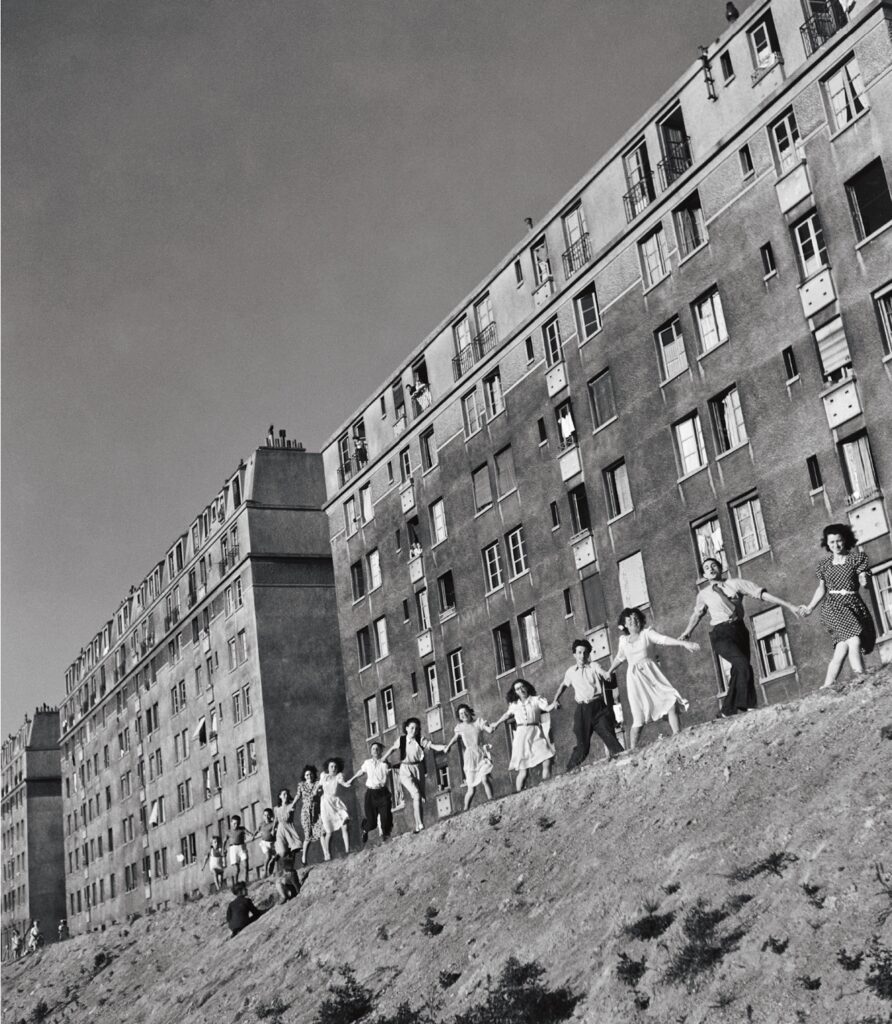One Doisneau can hide another. That’s how one might sum up the work of graphic designer Philippe Apeloig, who was entrusted by Dorothée Cuéno, Director of Denoël Editions, with the facelift of La Banlieue de Paris (Paris’ Suburb), a classic of classics published in 1949. Whether we know it or not, this book, written between two adventurers of reality, one more of a traveler than the other, established the vision of then little-known towns near Paris: Gentilly (Robert Doisneau‘s birthplace), Arcueil (where magnificent Erik Satie lived), Choisy-le-Roi and its Fête des Gondoles, Le Kremlin-Bicêtre and its flea market. Or Montrouge and the café La poule au gibier, which, on its own, condenses Doisneau’s incredible talent for composing his narrative with everyday characters, in this case billiard players, as if emerging from a romantic shadow.
When Philippe Apeloig discovered the originals in the company of the “demoiselles Doisneau”, Annette and Francine, something seemed “odd” to him. In fact, in the 1949 edition, the 130 photographs had been cropped “excessively”, points out the graphic designer. Hypothesis: at the time, the layout artist may have wanted to emphasize the photographer’s humanist side. “A humanist? Today, you don’t need me to say it, everyone knows it, it’s obvious, he was someone who loved people.”

The first task, then, was to lay out the real photographs, in the same order, of course, or rather “with equal fluidity”, in the words of the graphic designer, seduced by “these inexhaustible images, rich in tension and contrast, emptiness/fullness, isolation/crowd, action/inaction. And all those signs, that typography of cities in the open air, how can you imagine a city where there’s nothing to read…”
Consequence: the format had to be enlarged (230 x 265 mm), La Banlieue needed more space, there was no question of crushing these towns progressively deprived of bistros, “it’s the gas pumps that have taken their place”, as Blaise Cendrars writes.
The white page is a signature that makes you float: “Graphic design is like a building, you need foundations, it doesn’t have to be seen, it has to be felt. Of course, you have to be inventive, but you also have to be humble. It’s impossible to compete with photography.”
“Only photography can give people that air of family that it is almost impossible to render in writing”
Blaise Cendrars
Philippe Apeloig has made a few changes to make the book easier to read, such as adding captions at the head of each chapter, but he has also refined the cover, while retaining the essential twentieth-century vague à l’âme. Over the years, Cendrars and Doisneau have become like brothers in La Banlieue de Paris.
Their two names, now inscribed in capital letters, evoke this legendary duo, which made Blaise Cendrars write, so aptly moving in his robinsonnades and friendships: “Only photography can give people that air of family that it is almost impossible to render in writing.”

La Banlieue de Paris, text by Blaise Cendrars, photographs by Robert Doisneau, Denoël, 200 pp., 49 euros. The volume ends with a text by Claude Leroy, and an exchange of letters between Cendrars and Doisneau.




